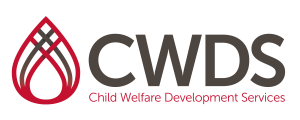CWDS Curriculum
Perinatal Substance Exposure
Level: Advanced Practice – Lineworker
Credit: 6
Intended Audience: New and current child welfare personnel wanting more information on signs, symptoms and effects of perinatal substance exposure
Objectives:
- Identify the diagnostic indicators of maternal chemical abuse vs. dependency.
- Discuss the various chemicals of choice and their effect upon gamates, the fetus, the neonate, infant and growing child.
- Present the parenting dichotomy and potential multi-generational effects.
- Identify various treatment and auxiliary interventions.
Topics Include:
- The Diagnostic Criteria for Chemical Abuse vs. Chemical Dependence
- Possible Physical Ramifications of Perinatal Exposure During Each Trimester
- Obstetrical Complications Associated with Drug/Alcohol Exposure
- Medical Complications Encountered in Pregnant Intravenous Addicts
- Neonatal Response (Apgars) and Withdrawals
- Developmental Concerns
- Causes of Substance Abuse and Possible Multi-generational Occurrence
Resistance - Child Neglect Issues
- Professional Enabling
- Treatment Options and Issues
- Effective Case Management
CalSWEC Competencies Addressed:
2.7 While incorporating knowledge of individual, family, and cultural dynamics, the student recognizes signs and symptoms of substance abuse in children and adults and assesses its impact.
2.18 Student demonstrates and understanding of the dynamics of engaging and working with involuntary clients.
2.20 Student understands and utilizes the case manager role to create and sustain a helping system for clients, including working collaboratively with other disciplines involved in child welfare cases.
Posted In:Medical Aspects
Substance Abuse



